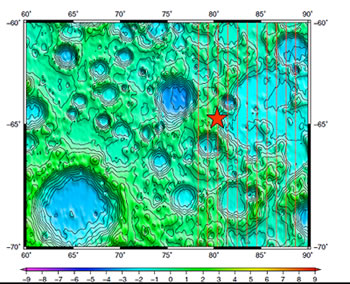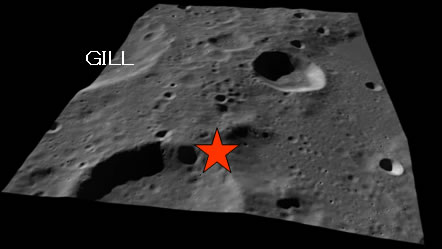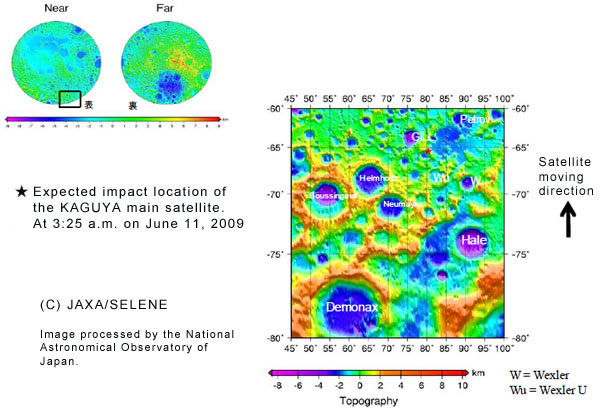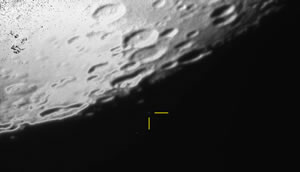Current position of KAGUYA.
The KAGUYA conducted nominal operations for about 10 months then an extended operational phase for about seven and a half months after being launched on September 14, 2007.

Orbit information ahead of the impact
The background image is a topographical map observed by the KAGUYA Laser Altimeter.
(C)JAXA/SELENE Data processing:NAOJ

Image of the impact area previously taken by the KAGUYA Terrain Camera
(A star mark shows the impact location.) (C)JAXA/SELENE

Topographical image around the impact area taken by the KAGUYA Laser Altimeter
To observe KAGUYA flash at controlled impact on June 11, more than 100 places tried to observe in Japan, Taiwan, Korea, Australia, New Zealand, Indonesia, and etc. Unfortunately, there was no report in Japan because the weather was bad. However, KAGUYA impact flash observations were reported in the near infrared region by AAT (The Anglo-Australian Telescope, Australia) and Mount Abu Observatory, Gurushikar (24.65 N 72.78 E, 1680 m, India) as below. By comparison study between KAGUYA impacted location and time with their reported time and location, their observation images are highly possible shot to capture KAGUYA impact flash. We are very appreciated for all of people to try to observe KAGUYA impact flash.
"The observations were carried out by Dr. T. Chandrasekhar, Mr. Rajesh Shah, Mr. S. N. Mathur and Mr. Raj Purohit of the Astronomy and Astrophysics Division of Physical Research Laboratory (PRL), Ahmedabad which is a unit of Department of Space, Government of India."

Bright impact flash visible in the second frame
Observations with the Anglo-Australian Telescope by Jeremy Bailey (University of New South Wales) and Steve Lee (AAO).
KAGUYA Impact on the Moon - June 10th 2009

Second frame of the above sequence
University of New South Wales/Anglo-Australian Observatory (J. Bailey and S. Lee)

Bright impact flash visible in the second and third frame
Mount Abu Observatory
Prof. Goswami (Physical Research Laboratory)
Observation of the Impact of Kaguya Spacecraft on Lunar Surface